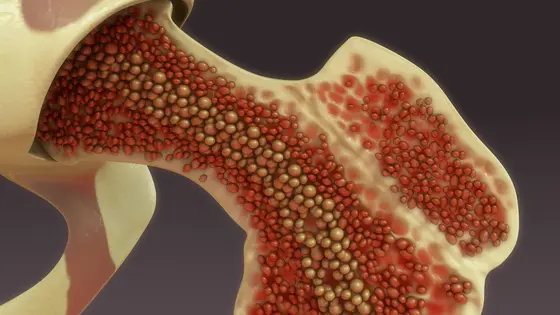If the emergency program of hematopoiesis starts up in the body, this signals an alarm state of the immune system and serves two different purposes: Compared to hematopoiesis in “normal mode,“ the emergency program results in increased replenishment of immune cells that are consumed during infections or inflammations. In addition, the emergency program puts the entire immune system into a pre-activation that helps clear infections more quickly.
Characteristic of the emergency program are, for example, an increased division rate of blood stem cells and a shift in the balance of mature white blood cells in favor of myeloid cells (macrophages and granulocytes). Normally, the emergency program is triggered by typical molecular components of pathogens or by pro-inflammatory messenger substances such as certain interferons.
But what happens in the blood stem cells and progenitor cells? Is there a cellular switch that triggers the emergency program? Scientists led by Nikolaus Dietlein and Hans-Reimer Rodewald of the German Cancer Research Center (Deutsches Krebsforschungszentrum, DKFZ) targeted a specific epigenetic modification, abbreviated H2Bub1. It is involved in switching on genes that are activated by interferon as a result of a viral infection and that are important for the defense against infection. The modification, which attaches to the packaging proteins of the DNA, the histones, is removed again by the enzyme USP22.
Could H2Bub1 and USP22 be the sought-after switch that triggers the emergency program in the blood stem cell? The researchers led by Rodewald investigated this in mice in whose blood stem cells USP22 was genetically switched off. In these animals, the emergency program of hematopoiesis with all its key features ran without any detectable infection or increased interferon levels.
The genetically modified animals were better able to fight off infection with the bacterium Listeria monocytogenes than normal mice. In addition, important scavenger cells in their blood, neutrophil granulocytes, were more successful at engulfing bacteria.
As expected, the genetic material in the blood cells of the gene-modified animals also had significantly more of the epigenetic H2Bub1 modifications. “The increased H2Bub1 level seems to be the alarm button that puts the immune system on standby. In particular, this puts the innate immune defense, which is especially important during initial contact with a pathogen, into heightened defense alert,“ says Nikolaus Dietlein, first author of the current publication. USP22, which removes the H2Bub1 modification, terminates the alert in normal animals.
H2Bub1 and USP22 are also found in human cells and, according to current research, perform comparable functions there to those in mice. Hans-Reimer Rodewald says: “In mice, we were able to show that an epigenetic modification improves the defense against infection. However, how the loss of USP22 affects human hematopoietic stem and progenitor cells is still unknown and should now be investigated. Inhibition of USP22 by drugs could possibly one day help to improve the immune defense against pathogens. So far, however, this is currently still unproven and needs to be tested in further studies.“
Nikolaus Dietlein, Xi Wang, Jonas Metz, Olivier Disson, Fuwei Shang, Celine Beyersdörffer, Esther Rodríguez Correa, Daniel B. Lipka, Yvonne Begus-Nahrmann, Robyn Laura Kosinsky, Steven A. Johnsen, Marc Lecuit, Thomas Höfer, Hans-Reimer Rodewald: Usp22 is an intracellular regulator of systemic emergency hematopoiesis
Science Immunology 2022, DOI: 10.1126/sciimmunol.abq2061



